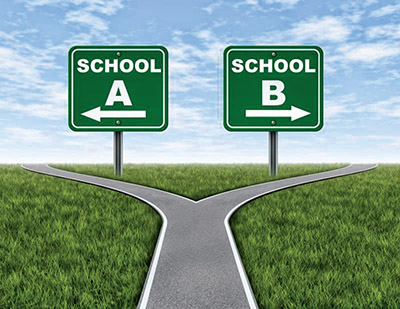
What makes a school good? What does it take to develop the kind of reputation that causes parents to sign up their toddlers before they can even walk or talk? What is the magic formula to create the perfect school? The truth is that there is no perfect school. Some schools are better for some students than others. Schools have different strengths. Some parents want a strong high school or college acceptance record. Others seek athletic opportunities. A fine facility is yet another desideratum. We cannot ignore STEM programs, extracurricular activities, time on the bus or even where a child’s friends are attending.
Yet, there are criteria common to all schools that drive excellence. Is the principal an educational leader/visionary, or a paper pusher so mired in administrivia that he/she rarely gets into the classroom? Does the principal have high expectations and the ability to help others succeed? This person must be able to understand people, and motivate them, creating a positive attitude throughout the building.
Do the students look happy? Do they smile as they walk the halls? Do veteran teachers mentor new teachers? Is there meaningful or pro forma professional development for faculty? The best teachers work to improve their ability to teach. They read and explore the techniques used by others in a never-ending effort to better themselves and their skills. Do teachers share some leadership responsibilities and policy making? Does the school offer ways for students to creatively express themselves? Some schools specialize in Talmud and stint on Tanach. Some focus more on Hebrew language. That too is a preference.
Do students want to be there? Effective schools have a warm climate. Students feel welcome and know that the school cares about them. Although there is an emphasis on achievement, it comes in a way that promotes learning, with an expectation that students will excel, and the support is provided to make it happen.
Is there a passion for excellence as a driving force each and every day? A good school has an involved staff working together, pushing themselves and their students to be the best they can be.
Is there a variety of instructional techniques used in the classrooms?
No two classes, or two students, are identical. An effective school has teachers that understand this and differentiate instruction to best help students be successful. Key concepts are presented in ways to enable visual, auditory and kinesthetic learners to grasp them. Students are actively involved in learning with a variety of opportunities to get key concepts. Since students’ abilities and needs are different, the teaching and interactions with students must reflect the needs of each, with the understanding of each as an individual.
Many factors go into helping a child become a productive adult, and there is no way an annual standardized test can measure success or failure. The fact that so many people believe that one test on a couple of mornings each spring can determine school quality, teacher quality and student learning shows an alarming lack of understanding in what makes a good school.
Even if scores did reflect what students were learning in school, they’d still fail to address the full range of what schools actually do. Multiple-choice tests communicate nothing about school climate, student engagement, the development of citizenship skills, student social and emotional health or critical thinking. School quality is multidimensional. And just because a school is strong in one area does not mean that it is equally strong in another. In fact, research has shown that high standardized test score growth can be correlated with low levels of student engagement. Standardized tests, in short, tell us very little about what we actually value in schools.
How much Hebrew is actually used as an instructional vehicle? Does the school look for native or fluent Hebrew speakers when hiring teachers? Is Ivrit B’Ivrit only taking place in the lower grades because it’s difficult to find teachers to teach in Hebrew in the middle or high school grades? What is davening like? Are the students engaged in tefillah? Is Beur tefillah taught? Is Jewish history, Zionism and the Holocaust taught? Is there a written, goal-oriented curriculum?
What makes a school good? Try asking someone. Chances are, they’ll say something about the impact a school makes on the young people who attend it. Do students feel safe and cared for? Are they being challenged? Do they have opportunities to play and create? Are they happy? Erica Brown observed: “Education involves more slow cooking than microwave cooking.” Our future depends on our demanding the best from our schools, whichever school we choose.
By Wallace Greene
Rabbi Dr. Wallace Greene was a day school principal and director of Jewish educational services for the UJA Federation of Northern New Jersey.










